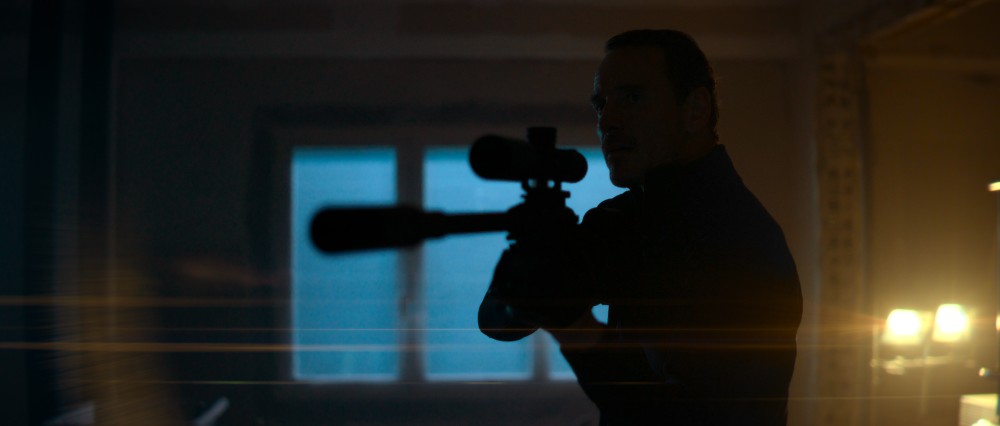
The last few years have been a whirlwind for Erik Messerschmidt, ASC. He had been working his way through the camera department for nearly two decades, including as a gaffer on David Fincher’s Gone Girl, before he began acting as DoP on a number of high-profile shows, one of them being Fincher’s Mindhunter for Netflix.
When Fincher decided to make Mank, his biopic about Citizen Kane screenwriter Herman J. Mankiewicz, as played by Gary Oldman, he brought Messersschmidt along with him to shoot the film in black and white. The movie was slightly hobbled by the pandemic that kept it from playing theatrically, but Messerschmidt won the Oscar for Cinematography, as well as the feature film category for the American Society of Cinematographers (ASC).
Last year, Messerschmidt reunited with Fincher for his adaptation of the graphic novel, The Killer, starring Michael Fassbender as an assassin on a streak of vengeance after a job goes wrong. He also teamed up with the great Michael Mann to shoot his racing biopic, Ferrari, starring Adam Driver.
Below the Line spoke with the cinematographer a few months back when he was in Poland for EnergaCAMERIMAGE, although we got on Zoom with him from the States.
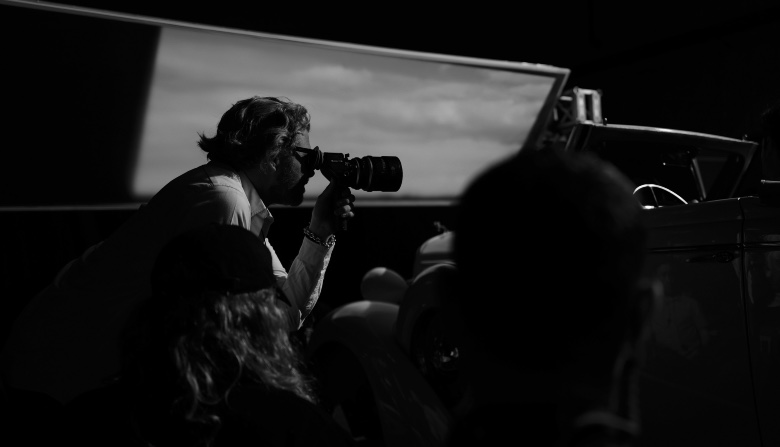
Below the Line: Last time we spoke was for Mank; since then, you won the Oscar, which was well-deserved.
Erik Messerschmidt: Thank you.
BTL: Your first feature as a DP and you win the Oscar, tough to beat that.
Messerschmidt: [laughs] Yeah, hard to follow that one up.
BTL: The Killer is kind of a different movie for David, but with a lot of the same crew besides you, including Production Designer Donald Burt and Editor Kirk Baxter. But this one you’re doing in color and modern-day. At what point do you hear about the project? Does David just hand you a script and say, “This is next”?
Messerschmidt: He called me. David never contacts me about anything until he’s 100% sure he’s ready, and he’s already wrapped his head around the film. He’s incredibly prepared. He sent me the script, and he said, “I just want you to think about pace. Think about pace.” I like when a director sends me a script, and they give me some context.
I read it, and the way the screenplay was constructed is very similar to a graphic novel in the way that it lays out the information for the audience in a very systematic, almost mathematical way. He sent it to me, and then we met, and we talked about story structure and scene structure and timing. It was almost like we were talking about editing, in a way, and then we scouted and the rest of the film kind of took shape after that. It was a very quick process of, “Okay, you want to do this? Alright, great. Yeah, let’s do it like that. Boom, done.” It was that sort of thing. [chuckles]
Of course, things get more elaborate as we got into the nitty-gritty of how we were going to accomplish certain things, and the challenges that we faced as we went down the path of figuring out how to make the film. I didn’t need to spend a lot of time with the script to decide whether or not to do it.
BTL: Do you have to storyboard a lot beforehand to know exactly what shots will be needed?
Messerschmidt: We don’t storyboard, but we have to have conversations about how many shots a given scene might need, and the resulting camera direction that is required. The film is very much about process in general. It’s about process and the war between subjectivity and objectivity in filmmaking. Scenes that could be quite slow and exist in one or two shots, we only shot one or two shots, and the scenes that needed to be fast-paced and cut quickly, we would block for, and then shoot more coverage so that Kirk had more to work with.
I think it speaks to David’s holistic methodology for filmmaking. He brings everyone into his world, and we’re all very attuned to what everyone else has to do. I’m thinking about Kirk when we’re shooting, and I’m in communication with him. Kirk is looking at what I’m doing, in terms of color and lighting. Same thing, Don Burt is considerate of what I need from where he’s putting the windows to how many practicals to how the interior of a scene is lit.
Everybody is supporting each other. It’s a Venn diagram of collaboration. The lines of delineation between where one person’s role is and the other is not necessarily as clearly defined as the textbook states.
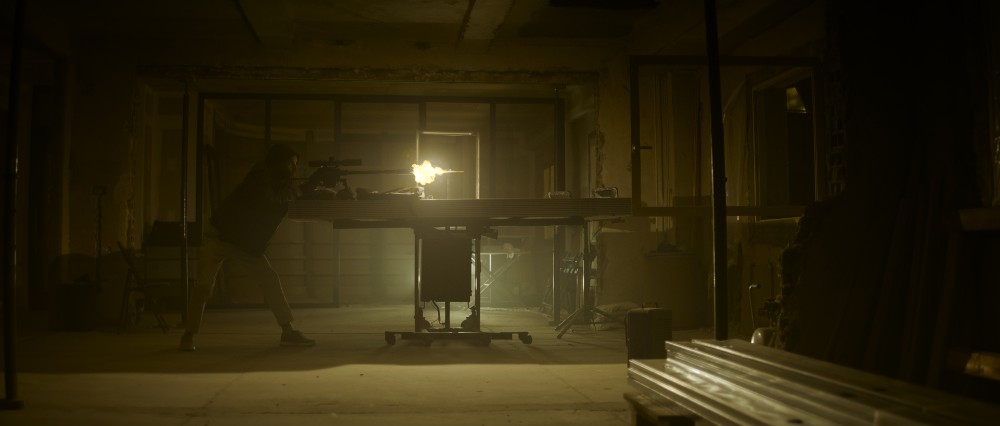
BTL: I’m really interested in how you work with Don Burt. The Killer seems to have a lot of locations, and I’m not sure if there were a ton of builds. The opening 25 minutes is just brilliant filmmaking, so is that a place that was built where you could shoot that? How long did it take to shoot that sequence?
Messerschmidt: We had gone to Paris to look for a location that would work practically, and we didn’t find it. We were looking for a penthouse apartment with a vantage point from across the street in a square where all the action could take place. All of that was scripted – the morning activity in the square and the café etc. We found a square, we found a vantage point, but we didn’t find a penthouse apartment.
Don built the penthouse on a soundstage without a facade, and then we shot plates to the exterior, which served as reference and the lower section for the matte painters to work with, and then they blended that apartment into the top of the building across the street. And then, the interior was a set that we built on a stage in New Orleans, where we shot all the coverage of Michael looking out the window, pointing the gun, doing yoga, all that stuff, and it’s all been combined. All in, that sequence itself probably took… with scenes in between… three months to shoot, because we shot Paris first.
Then we shot Michael in his apartment, and then we shot the target in his apartment, so we had to really structure that and camera direct that in some sort of pre visualization process, but before we shot any of it, because none of those places existed in the same location.
BTL: I know David tends to act as his own VFX supe. When you watch a movie like The Killer, there doesn’t seem to be a ton of VFX, since they’re blended so well and done so fluidly. I’m not sure if you’re regularly dealing with VFX vendors to maintain the look between the locations, or if that’s done later in coloring.
Messerschmidt: I would say this is the movie I’ve been the most involved in post-production of anything I’ve done. There’s a lot of clarity. Unfortunately, in the world of VFX, the vast majority of visual effects work that’s done is the fixing of things, the repair, or the mending of stuff that didn’t work practically, that then has to be solved – the “fix it in post” concept. That’s not really a concept that exists in David’s workflow, where we don’t fix it in post — we augment it in post.
We fix it in prep, so we know exactly what we’re going to do digitally. We know where the handoff is, and we shoot the elements that we need practically, very deliberately. And then, the elements that have to get blended or done in post are done with intent.
I think it speaks to David’s understanding of visual effects, but I sure hope they’re not noticed. I find that’s when visual effects are the worst, and also, when the visual effects take the lead. I think the visual effects, hopefully, just like the cinematography, they should take a backseat role to the story. All too often these days, in American filmmaking anyway, you see the visual effects movie of the year. That ends up being the headline, unfortunately.
BTL: I spoke to Producer Peter Mavromates about the post process for Mank, and he talked about how VFX and virtual production were used in certain scenes.
Messerschmidt: Absolutely, but those decisions are things we’re making usually on the scouting process.
BTL: There are many locations in The Killer that are not known for great lighting — airports, hospital rooms — they’re always so brightly lit. And yet, they all look so beautifully lit in The Killer. How much time do you have in these locations to light the spaces the way you want to?
Messerschmidt: Thanks. I generally believe that you can’t make a location look a way that it just doesn’t look naturally. An airport that’s fluorescent lit from the top, the lighting has to originate there — that has to be the primary component in the structure of a lightning. It’s very difficult to take an office building, and then make it look like a Renaissance painting. I try to lean into it, and then, it’s easier, because I can take a fluorescent toplit environment, for example, and say, “Okay, what would make this more aesthetically pleasing, or more interesting, or more story appropriate?” Then, it becomes a conversation of color, and exposure and contrast, etc.
For me, I just try and work as minimally as possible, and most of the time, to be honest, it’s turning things off. Gordon Willis is probably my hero, and I look at the work he did in All the President’s Men, for example, and to me, that’s one of the most beautiful films of all time, and it’s a fluorescent interior office. In some of those situations, composition can take over, or blocking, staging, or playing a film like High and Low, for example, is another example. The compositions are so strong, you forget that it’s in an office building.
BTL: Let’s jump to Ferrari and Michael Mann. The man’s a legend. He also hasn’t been making as many movies in recent years, at least not one every couple years like David. How does he reach out to you and when do you get that call?
Messerschmidt: I adore his films, most of them, and I was a fan. I had met Michael to do the TV show Tokyo Vice, actually, so that’s how I knew him. He had asked me to shoot some of that series, and then, because of COVID, that schedule shifted, and I became unavailable. I wasn’t able to do it, but he and I stayed in touch, and we have some mutual friends.
He sent me the script, and said, “I want you to read the script and call me back.” I read the script that afternoon and called him back that evening, and I said, “I’d love to do it,” and he said, “Great, I’d love to have you.” I was finishing The Killer actually, and I went to see him in LA and I met him in his office, and we talked about the film briefly, and then he went to Italy to start his prep, and then I shot some lens tests in L.A., and then, I followed behind him a few weeks later. It was a very quick process, jumping on that film.
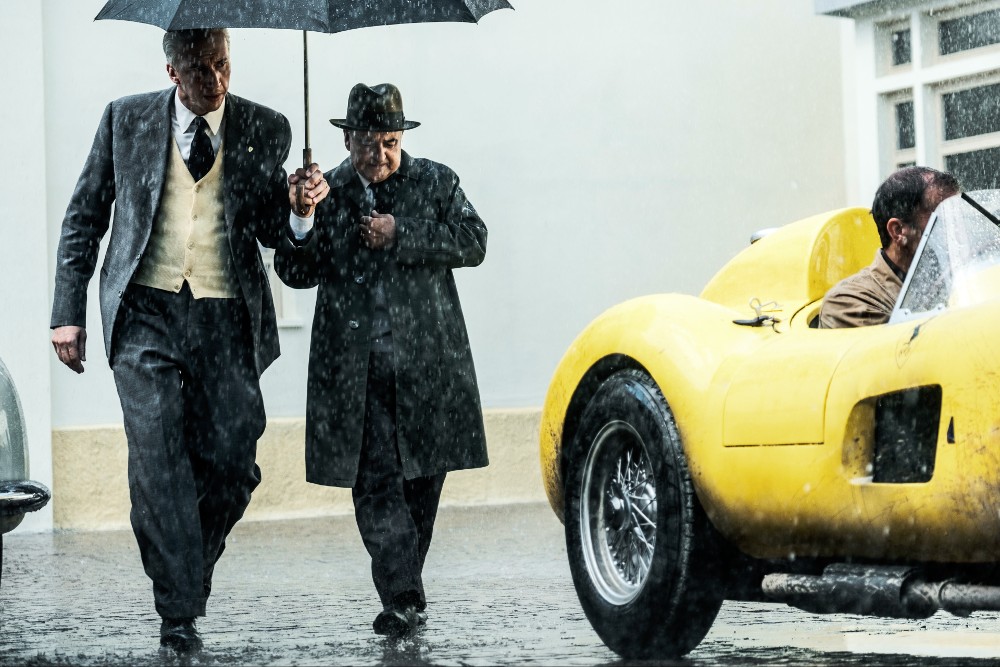
BTL: It’s also a period film like Mank was, so what sort of lenses or cameras are you putting together to give it the proper look for it?
Messerschmidt: Michael had brought up Italian painting, and he said, “I think that should be the basis for the style of film,” and I agreed. We referenced, particularly the Venetian school of portraiture, so you have Tintoretto, Titian, Caravaggio in there, and then the Dutch masters – they’re not Italian, but that felt appropriate. One thing that’s very consistent is this rich shadow contrast, but also, extensive use of soft top light, and it’s very Italian. You walk into some of these Italian interiors, and you understand immediately why the paintings look the way they do.
I went to Dan Sasaki at Panavision. I love Panavision for specific projects, and this was one that felt very appropriate. I went to Dan, and I said, “I need a set of lenses that has chromatic aberration softness in the highlights, because I’m going to use a lot of contrast. But I need resolution. I’m going to shoot large format, I’m going to shoot 8K on the Venice, and I don’t want chromatic aberration, and we want to shoot spherical. This is not a movie for flair. This is not a movie for heavy distortion.” It felt like a spherical film to me.
Dan built this beautiful set of Primes, two sets actually, of lenses for the film that followed exactly that instruction, and we shot some tests with them, and we were very happy. We built a series of LUTs as well. It’s a combination of what you’re doing with filtration and color management and lensing – it all has to work together. You can’t just pick the lenses and expect them to do all the heavy lifting.
BTL: Are you generally customizing for every new project you take on in order to get a different look for each one?
Messerschmidt: I try to read the script, and speak to the director and get a sense of what we need to accomplish, and then, pick the right tools. It’s very much in fashion now to say, “Oh, what lenses did you shoot with?” and let the lenses do the hard work? Anamorphic is incredibly popular now, and you have this return to vintage lenses. I just don’t really subscribe to that concept in the broad sense. I believe that it’s far more nuanced than that. It’s about the refinement of the tools in combination, and how they need to work together. It’s not quite as simple as, “Oh, I shot anamorphic, and that’s the look I got.”
Personally, I think that is almost a disservice to the craft of cinematography in that it lowers it to this kind of janitorial job of, “Oh, well, I just get these tools and I get this result.” When I shot Devotion, we had a very specific look in mind, and the lensing we used there, we made certain decisions, but it was all supported by the lighting, and then the exposure, color management, grade, etc.
With David, I almost exclusively shoot spherical – I don’t particularly care for anamorphic. If a director came to me, and they said, “I really want to shoot anamorphic,” I would consider it, of course, but I generally find that I like the characteristics that spherical lenses give me. On the case of The Killer, for example, we shot spherical, we shot Leica Summilux, which is the same set of lenses we actually shot Mank on.
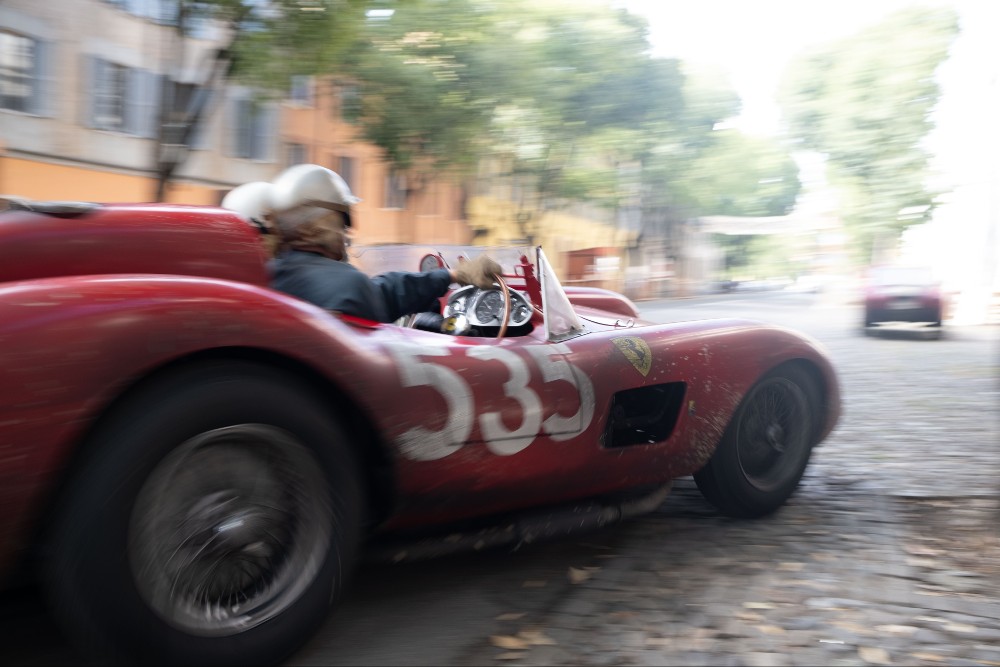
BTL: My last question about Ferrari is about the racing scenes, which are fantastic. The racing scenes are very visual effects-driven, I’d imagine, so how are you approaching what you’re shooting live knowing that things will be added and pieced together in VFX?
Messerschmidt: Actually, there’s very little visual effects in the film, in general. There’s obviously visual effects in the crash sequence, because we can’t actually crash the car into people. Other than that, there’s no green screen in the movie, there’s no car process work, there’s no virtual production. When those guys are driving, they’re actually driving, and when Patrick Dempsey bursts into the square there, that’s all real.
I think that speaks to Michael’s insistence that it all comes from a place of reality. I do believe that translates to the audience’s experience of the film. It’s intrinsic, but there is use of visual FX and there’s a sparse use, for sure.
Michael wanted the film to have two very distinct feels. He wanted the more intimate, dramatic scenes between Adam and Shailene [Woodley]. Those needed to be more classically lit and more classically photographed in terms of the direction of the camera, and then, the racing scenes need to have extreme contrast and to be very visceral and frenetic and aggressive, because that’s what it feels like to be in one of those cars.
The Killer is available to stream via Netflix, while Ferrari is still playing in theaters nationwide.





